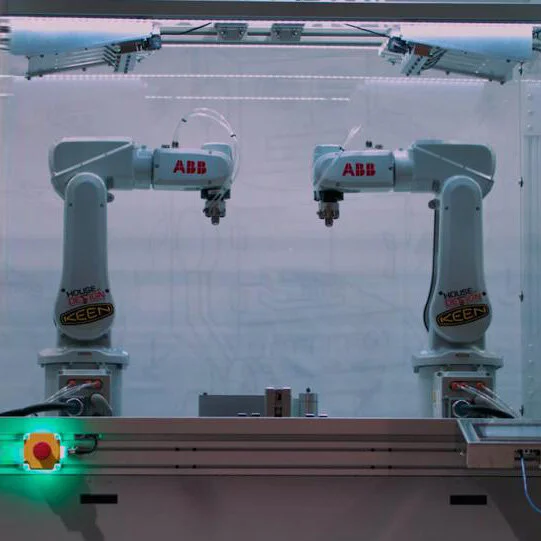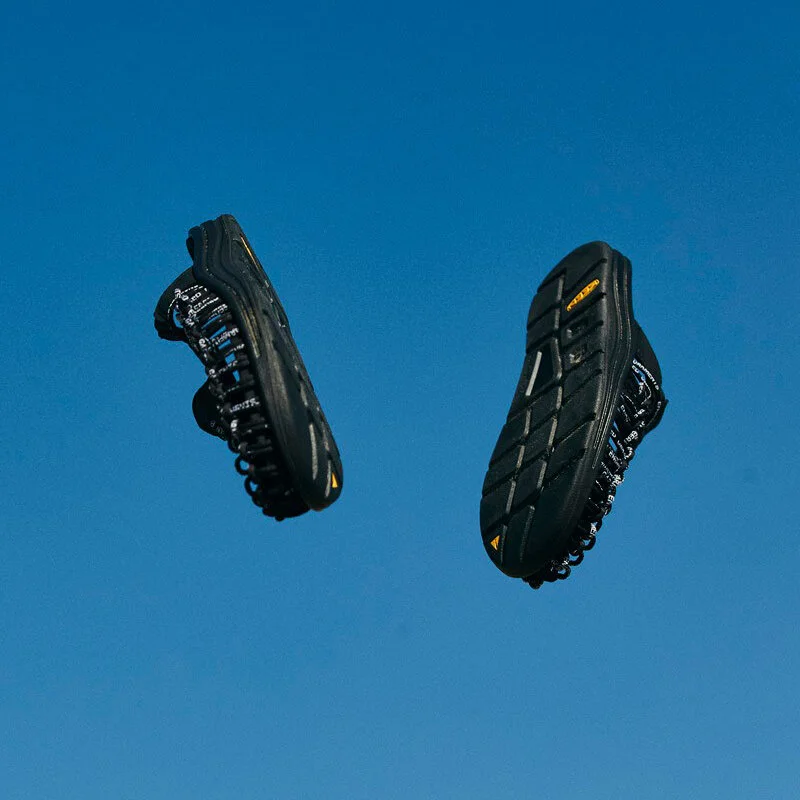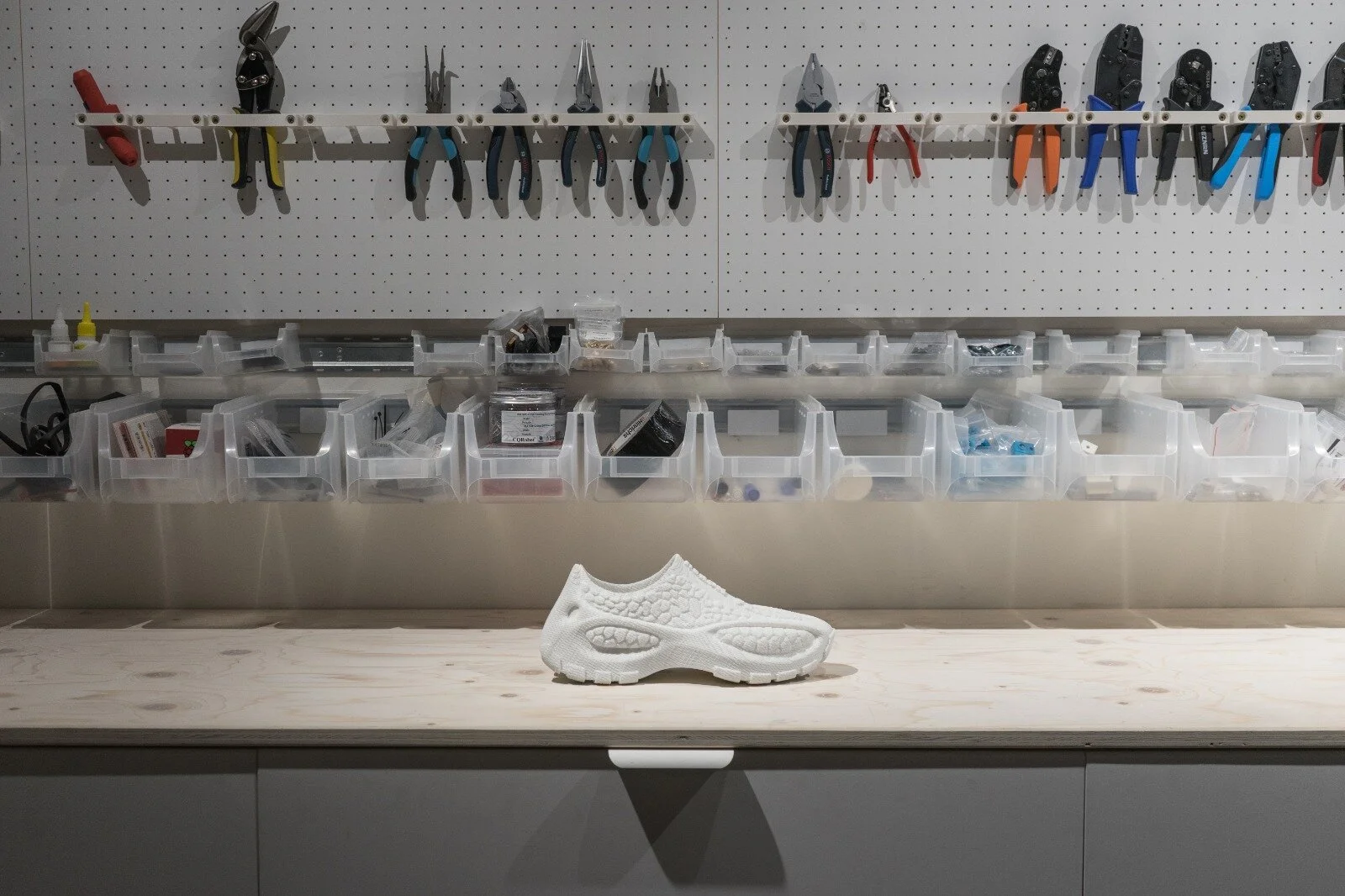Mind Your Step 002: Sustainability
Circularity is quickly becoming the conventional mode of production across the footwear industry as brands engage with their products from procurement to end-of-life. Although the sector rightly celebrates its move away from linear material lifecycles, it’s prone to forgetting to invite the people facilitating that change to the fore…
Despite the seemingly holistic nature of this spherical system, a 2020 report from the Corporate Human Rights Benchmark found that only 34% of footwear and apparel brands set out specific standards against poor human rights in their supply chains.
Conceptkicks unpicks how today’s footwear can both neglect and work to unlock human potential. Hearing from brands, creatives and policymakers, we seek to uncover the pitfalls that continue to exist within the increasingly ‘green’ fashion trade and theorise on blueprints for human-safe and creativity-nurturing supply chains.
Fig.1 Keen x Engineered Garments
The intrinsicality of human and planetary health has been laid bare in the last 12 months as we’ve all become increasingly aware of zoonotic infections like Covid-19. The United Nations puts the prevalence of these new threats to life down to numerous factors, the pre-eminent one being the degradation of the buffer between animals and humans through unsustainable and invasive production practices.
Through the harvesting of raw materials for footwear, the design industry is not exempt from putting those at the beginning of its supply chains at greater risk of illness, poverty and a challenging lived experience. As consumers of footwear continue to stomp around cities in animal and nonrenewable plant-derived shoes, it’s undeniably easy to forget the humans behind the hyped styles.
It’s these members of the three million-person strong supply chain that strategies and initiatives like the SDGs and B Corp certification work to highlight. Setting clear metrics for a privatised and thus mutable business model, the Sustainable Development Goals were implemented by all United Nations member states in 2015. Encompassing poverty, inequality and climate change, the 17 key actions set out to eliminate human and environmental discrepancies by 2030. From eliminating hunger to decreasing inequalities, the goals provide a touchpoint for the global footwear industry and work to catalyse greater supply chain transparency.
Fig.2 Vivobarefoot Mentality
Following the same wide-reaching approach, the B Corp certification - something that all footwear brands have their sights on these days - is the only cross-industry assessment that measures a company’s entire social and environmental performance. The accolade is only bestowed upon brands that score 80 on the NPO’s point system. Only one-third of applying business certify, which explains but doesn’t remove the regrettable reality that only approximately 20 global footwear brands can say they boast the badge.
Amongst the likes of Veja and Anything Can Be Changed, you’ll find Vivobarefoot in the B-corp footwear brand directory. After championing them for their biomaterials, it seemed only right to find out how the brand is one of the highest-scoring for its supply chain management.
“We are the first brand to go PFC free, antimicrobial free and to have zero liquid discharge from tanneries.”
(Himanshu Patel, Senior Materials Manager for Keen Footwear)
“Our supply chain is complex but the key thing that we strive for is hyper transparency,” explains Asher Clark, Chief Design Officer at the brand who gained B-Corp certification in 2020. They continue: “The team goes to our procurement areas and we try to make sure that if anything smells funny we stay away from it.”
Vivo is a regenerative-dedicated brand that focuses on creating a healthy human connection between the wearer and the planet through their terrestrial yet amphibious styles. But, their human-first attitude doesn’t stop at the consumer or procurement stages. Clark highlights the overarching employment ethos at his design studio, saying: “At a business level you can't promote a health proposition if the people in your business aren't thriving. If you aren't sleeping, eating, moving or shitting, you can't turn up as a healthy human being. You can't make healthy decisions for yourself, the people around you, the planet or your design process.”
Fig 3. Keen Uneek Weaving Robot
The industry’s self-professed best kept secret Keen Footwear are another trailblazing brand that is dedicated to nurturing a healthy planet for their employers and ‘fans’. Driven by the removal of 6 classes of toxic chemicals from production and investing profits - donations sit at around three-quarters of a million dollars to date - into NGOs, the company is unmatched in its care for future human potential.
“We started our initial detox journey eight years ago. We are the first brand to go PFC free, antimicrobial free and to have zero liquid discharge from tanneries. These things were poisoning the planet, poisoning us as well as smaller organisms and life forms,” explain Erik Burbank and Himanshu Patel, two brains behind Keen's planet-conscious output.
As the speed at which consumer interest in more sustainable and ‘transparent’ products increases - the Circular Fashion Summit reported a 29% jump in the last year - Vivo and Keen’s planet and people-conscious path remains largely untrodden. Could a lack of governmental action be the reason behind the slow-uptake of human sustainability by other UK-based brands and the reason why the fashion industry continues to stumble upon human-rights disasters like those found at Boohoo’s factories last year?
“The UK is one of the only countries in Western Europe that doesn’t have a labour regulator,” starts Mary Creagh, Chair of the Environmental Audit Committee, Labour MP until 2019 and contributor to the prodigious Fixing Fashion governmental report. Creagh explains how the Leicester factory disaster could occur in this country: “Wage offences are dealt with by HMRC, bad working practices are dealt with by the Gangmasters and Labour Abuses Authority, dangerous working environments are down to the Health and Safety Executive and there are potential immigration offences which are controlled by UK Borders Agency.” It’s this convoluted, diluted and separated way of governmental working that has left labourers within the fashion system disproportionately vulnerable.
Over the course of our call, Creagh put her money on artificial intelligence for the surveillance and auditing of globalised footwear supply chains. Technology companies Lablaco, TextileGenesis and Ethereum 2.0 are at the forefront of implementing blockchain into the system. Through encrypted data collection at every stage of production, human inputs will enable brands to not only highlight where they are excelling but also allow consumers to hold companies accountable for their failures.
Another B-Corp brand, Allbirds are one of the first footwear brands to make use of data collection for human education. A representative for the brand says: “We want to make carbon numbers as easy as nutrition labels on food, with carbon indicating the effect of our shoes on planetary health. You can’t reduce what you don’t measure, so carbon labelling is important for holding ourselves accountable and understanding the steps we must take to successfully drive down our pollution whilst also empowering our consumers to make informed choices.”
Fig. 4 Transparent Labelling by Futurevvorld
Despite their strong-hold over the sustainable footwear sector, the team at Allbirds aren’t the only innovators engaging with food labels. Daniel Navetta, orchestrator of @theairvegan and Editor in Chief of Future VVorld worked with designer Roy Cranston to pilot a range of environment-highlighting footwear labels last year. Their collaboration brings attention to the statistical environmental impact of sneakers. It engages with the potential of human knowledge, bureaucratic change and competition for the cultivation of a more visible supply chain.
“We're supposed to trust the Food and Drug Administration to tell us what we should eat so I don't know why that transparency isn’t happening in footwear and materials,” Navetta explains. The full-time documentary and filmmaker, part-time sustainable sneakerhead also highlights the power of psychological and business competition in the proliferation of these ideas: “We need to put pressure on brands, if Adidas were to implement a sustainable practice then Nike would feel the pressure to match them!”
On conglomerates, Navetta feels passionate about a complete overhaul of human interest in hype culture. Citing Virgil Abloh’s 2017 “The Ten” Collection as just one example, he explained how industry leaders play a vital role in moving footwear away from chasing the cheap needle: “If hyped collections were rooted in greater environmental responsibility and influential brands and designers took this seriously and celebrated it as cool, they could move the needle!”
Fig. 5 Zellerfeld for Heron Preston
With a market size of $16 billion, one way to create footwear on a single-person supply chain with a single needle - or button - is 3D printing. At the forefront of the exponentially growing sustainable alternative is Zellerfeld, an American-German company responsible for printing fully functional and wearable shoes. Harnessing futuristic technology, Cornellius Schmitt and Peter Graeff produced the filament-extrusion based printer that they now use to create fully recyclable and aesthetically exquisite designs.
Their business model was not founded in sustainability though, the pair just wanted “to have cool shoes again”. Based on a restructuring of the footwear industry, Zellerfeld is the pinnacle of the sustaining of human creativity by reducing up-front investments, removing the need for minimum order quantities and injection mould costs. Their printing relies only on a single data file and enables unmatched possibilities, Schmitt explains: “To us, every shoe is a piece of art and if we can lower those barriers to entry and the whole shoes production process is just a push of a button, cooler shoes can begin to emerge again.”
From a hands-on approach to supply chain innovation to technology enabling egalitarian opportunities, human sustainability in footwear is far-reaching. Whether it’s the procurement of materials or the cultivation of creativity, a holistic approach to design should work hard to nurture the people who power this industry.








